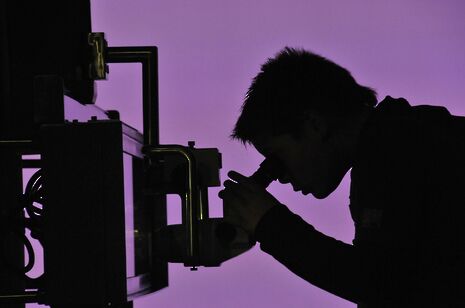The NanoKnife: future or false hope?
New technology may mean doctors are able to better fight cancer

The NanoKnife, a method using electrical impulses to destroy cancer cells, has been hailed as a pioneering technique for cancer patients where surgery poses too high a risk, but clinical trials are yet to prove its effectiveness and safety for humans.
The benefits of NanoKnife seem obvious at first; if a patient’s tumour is adjacent to a vital organ or blood vessel, traditional surgery may be deemed too dangerous to be carried out, whereas the ultraprecision of the NanoKnife means that it can target these tumours without damaging healthy tissue. Cancers of the liver, prostate and pancreas are among those most frequently treated by the probe-based therapy.
Currently used by several hospitals around the world, the NanoKnife kills soft tissue tumours through the application of an electric current, leaving the healthy surrounding tissue of the body unharmed, and making it a safer procedure than heat-based treatments such as radiofrequency ablation therapy.
The NanoKnife procedure involves no open incisions. Needles are guided through the skin using ultrasound or CT scans while the patient is under general anaesthetic. Once the needles are strategically positioned around the tumour, an electric current of up to 3,000 volts is passed between them. This causes the cell membrane to rupture, inducing ‘natural cell death’ (a process called apoptosis).
Little or no pain is experienced by the patient. There is also a much quicker recovery time compared to alternative treatments; after the operation patients typically will only be required to stay in hospital overnight.
Yet concerns have been raised by doctors that the adoption of the technology has not followed the established procedures for making sure it is safe and actually effective in patients. In the United States, many hospitals using the treatment have used a legal loophole which allows them to adopt NanoKnife without subjecting it to the rigorous clinical trial required of other aspiring cancer treatments. Doctors have also voiced concerns about the dangers of high electrical voltages on the human heart, and there have been cases in which patients have suffered punctured arteries after undergoing NanoKnife treatment. Unless these concerns are addressed, it will not be possible for the technology to be widely adopted by the medical community.
For many patients whose cancer is in the advanced stages, though, the procedure seems to be one of the last available rays of hope. A significant advantage of the NanoKnife is that if the cancer does return, the treatment can be easily repeated. As with all new cancer treatments, clinical trials should be an essential part of its adoption. While some members of the medical community are certain of its effectiveness, others are cautious, and cancer patients keep living on bought time. A speedy decision on the future of NanoKnife is essential.
 Interviews / You don’t need to peak at Cambridge, says Robin Harding31 December 2025
Interviews / You don’t need to peak at Cambridge, says Robin Harding31 December 2025 News / Unions protest handling of redundancies at Epidemiology Unit30 December 2025
News / Unions protest handling of redundancies at Epidemiology Unit30 December 2025 Comment / What happened to men at Cambridge?31 December 2025
Comment / What happened to men at Cambridge?31 December 2025 Features / ‘Treated like we’re incompetent’: ents officers on college micromanagement30 December 2025
Features / ‘Treated like we’re incompetent’: ents officers on college micromanagement30 December 2025 Theatre / We should be filming ADC productions31 December 2025
Theatre / We should be filming ADC productions31 December 2025







